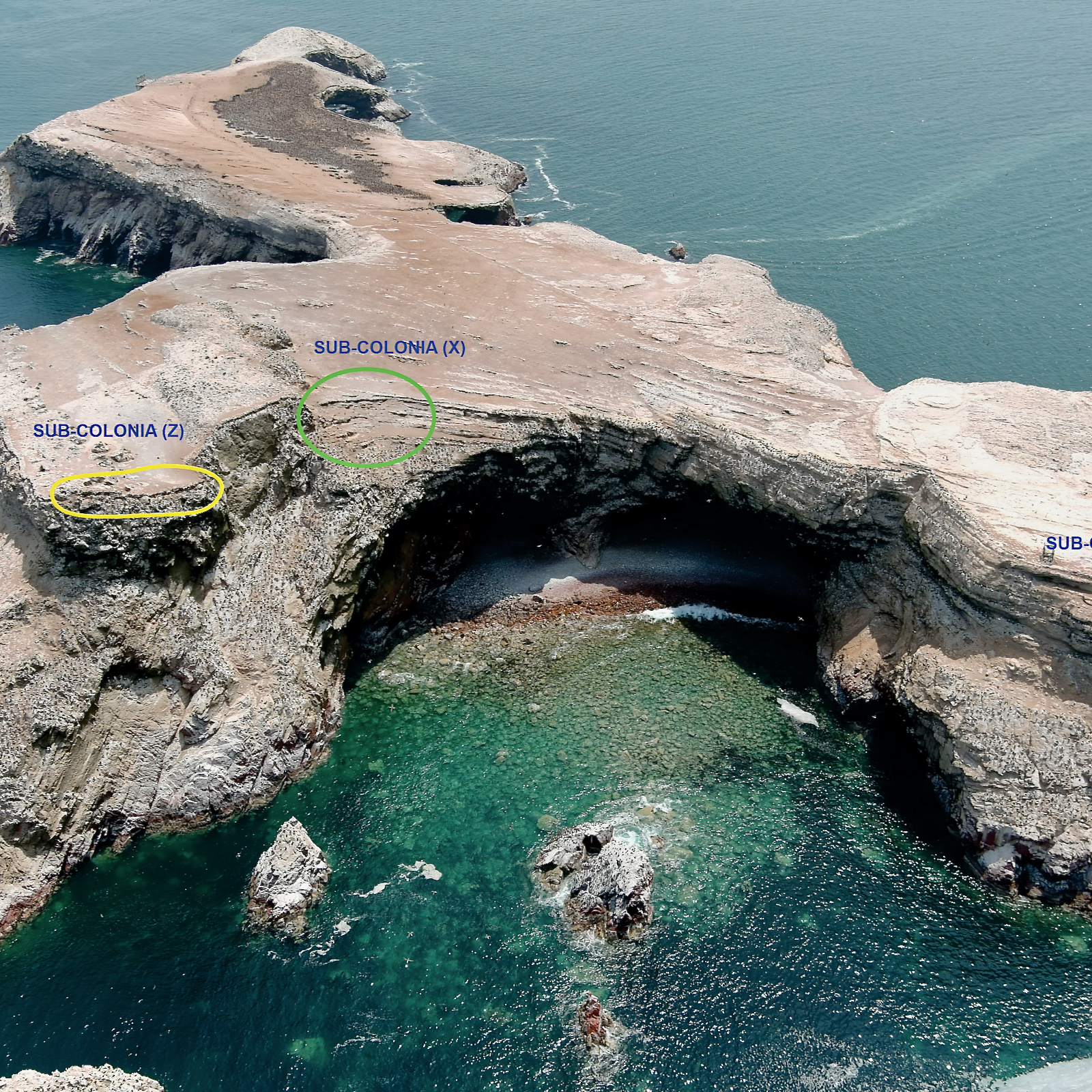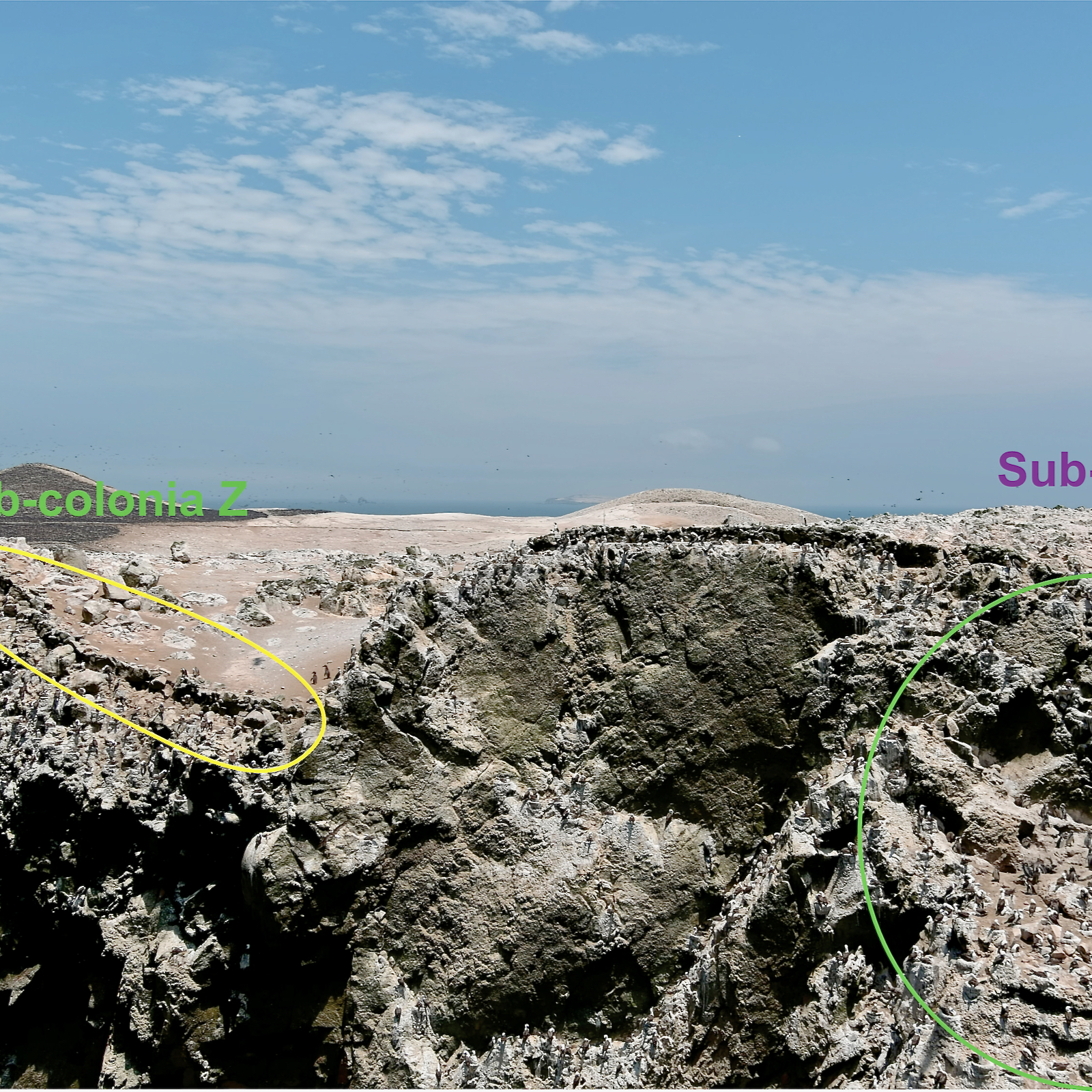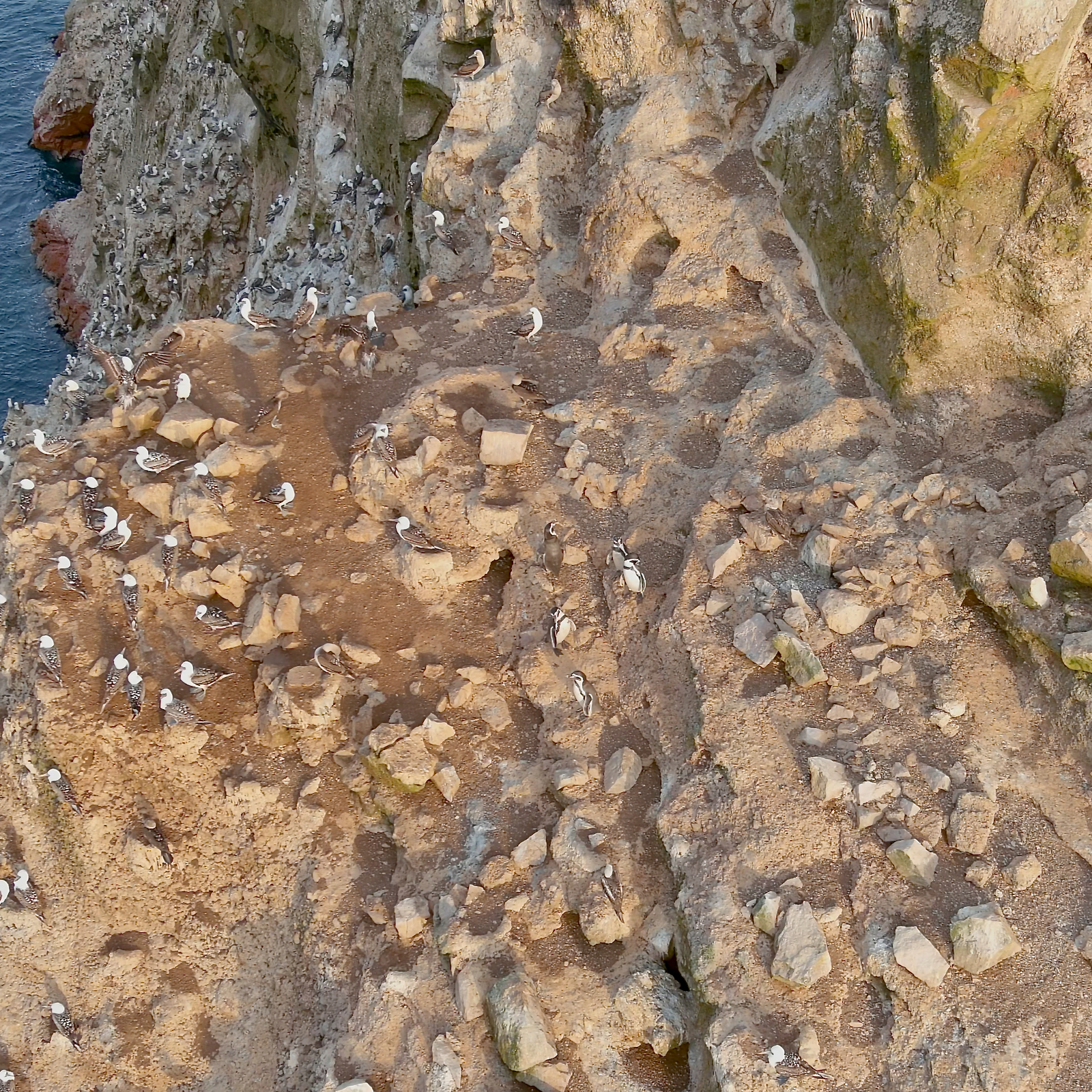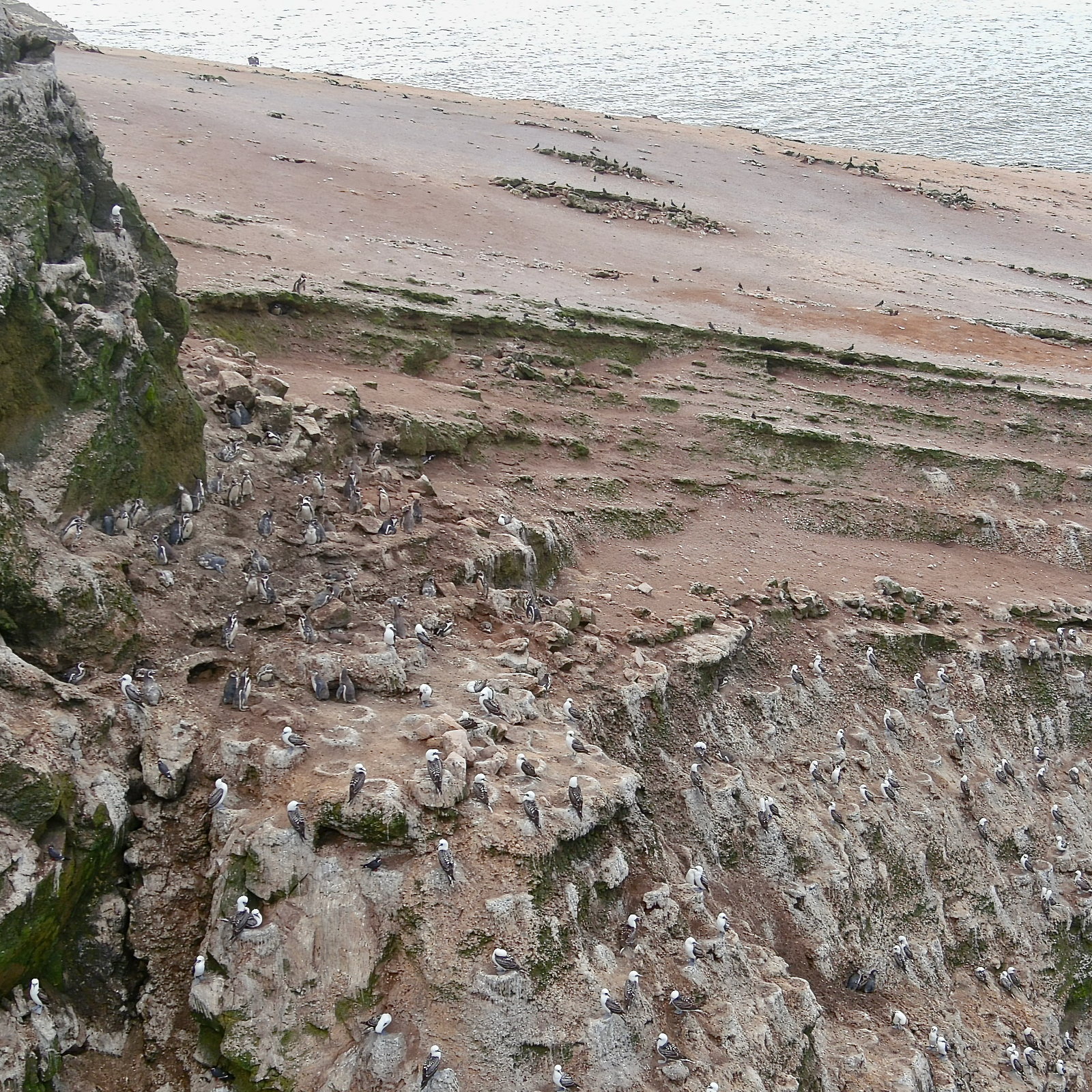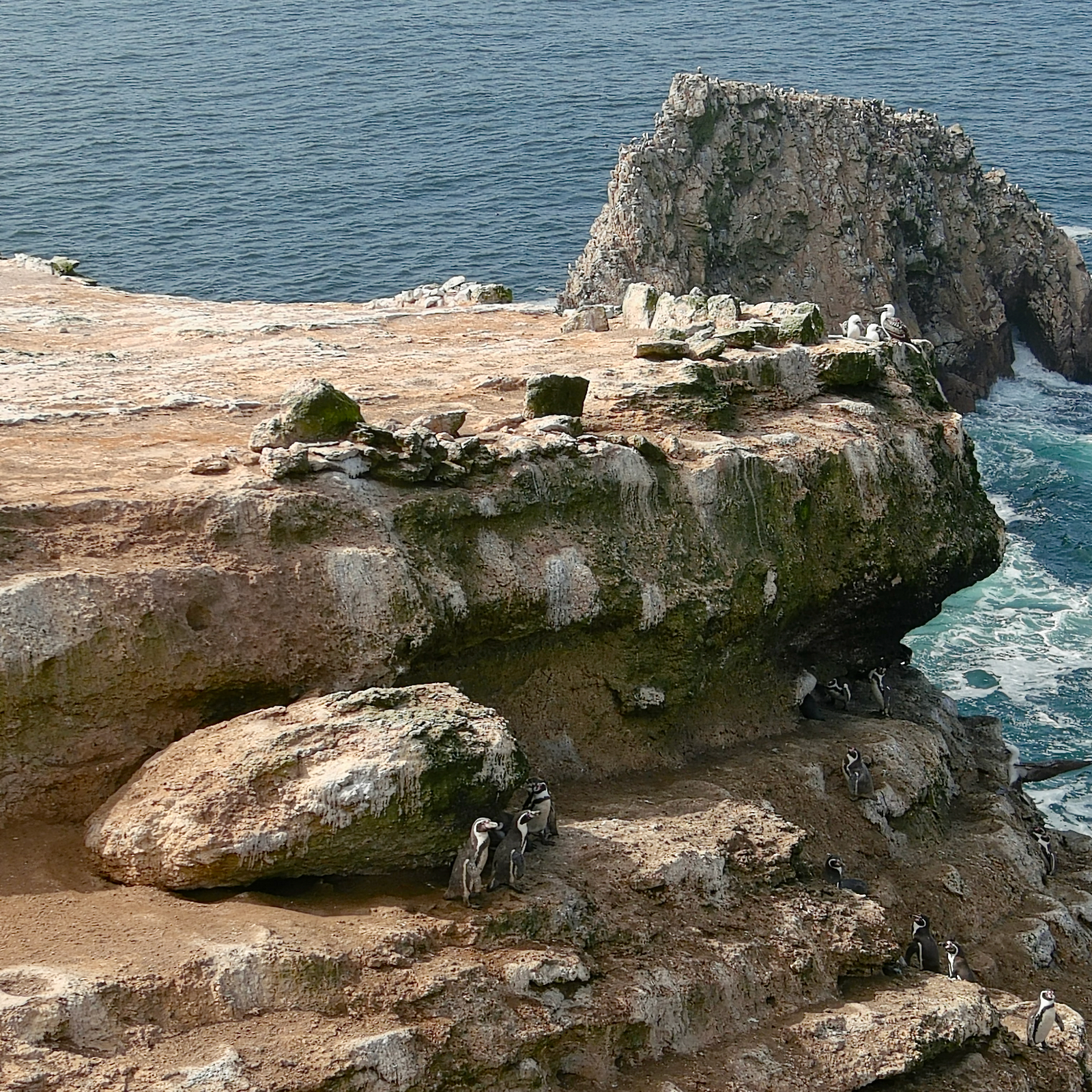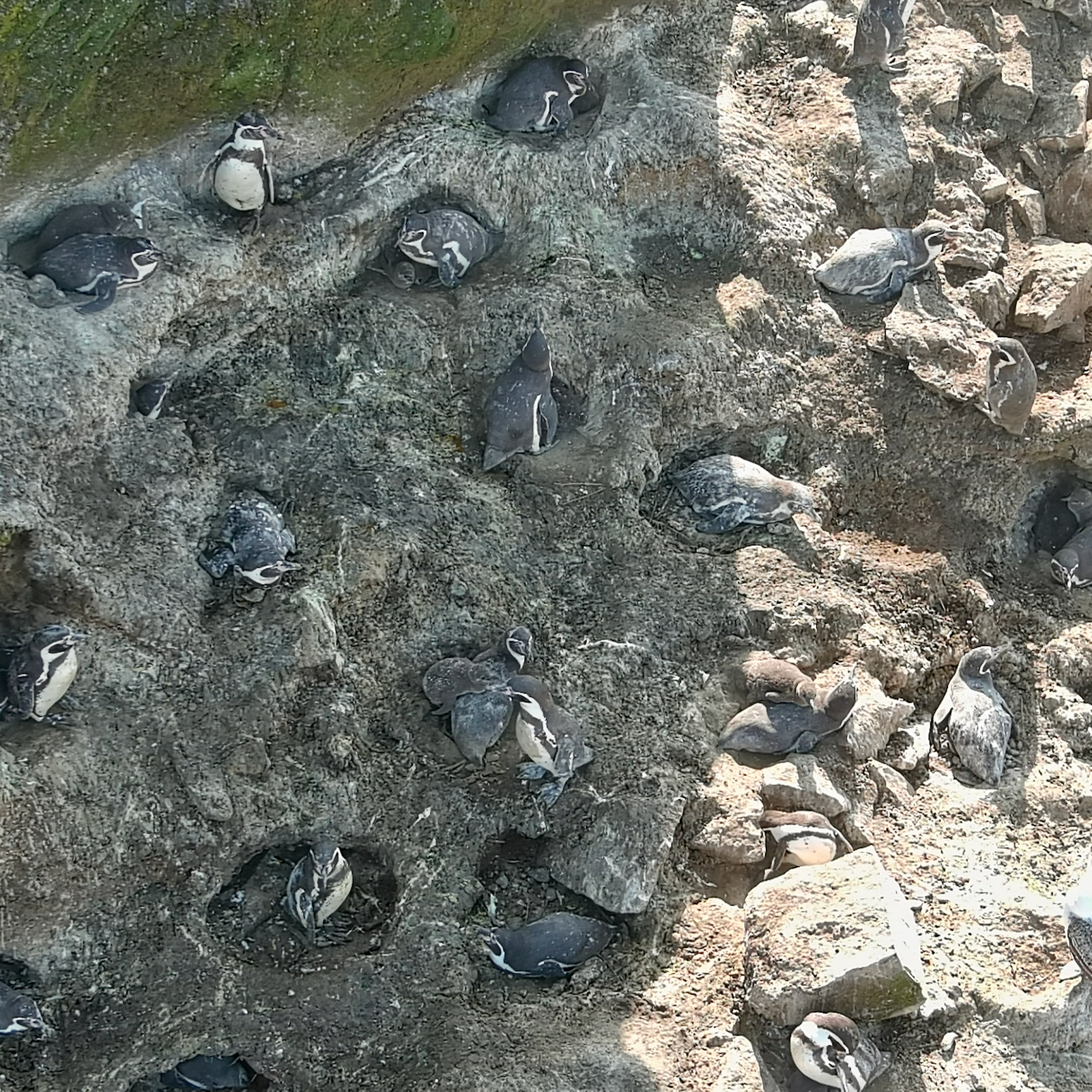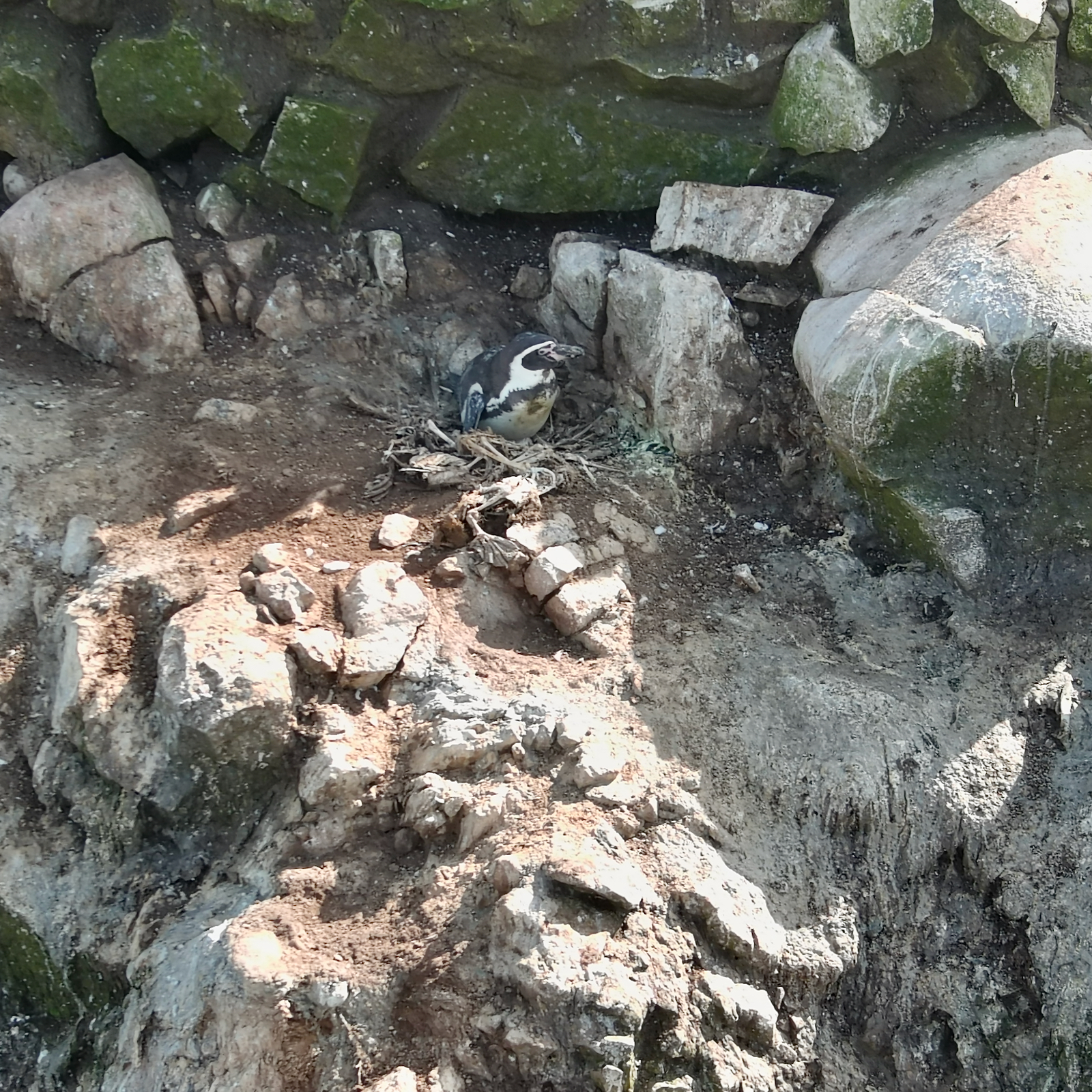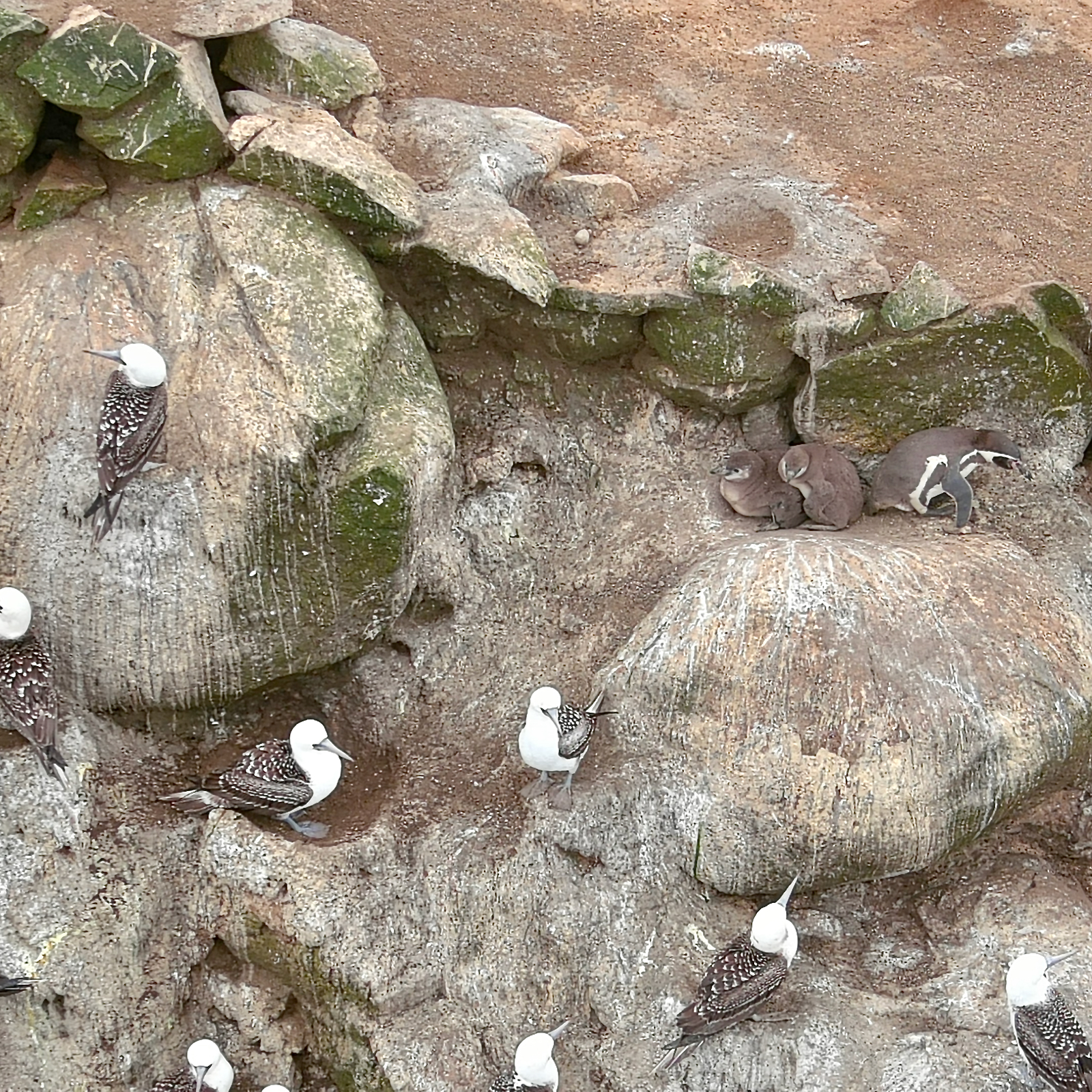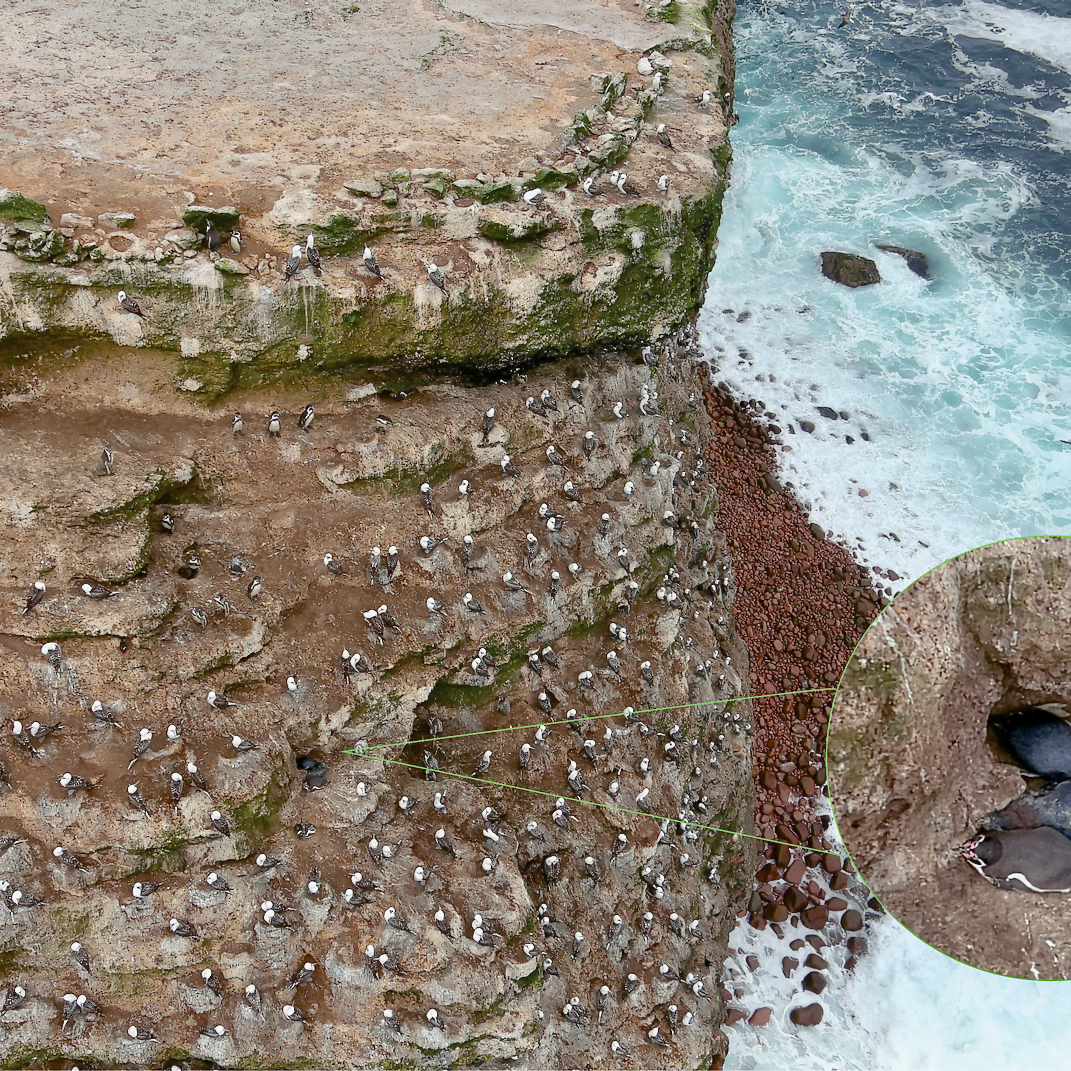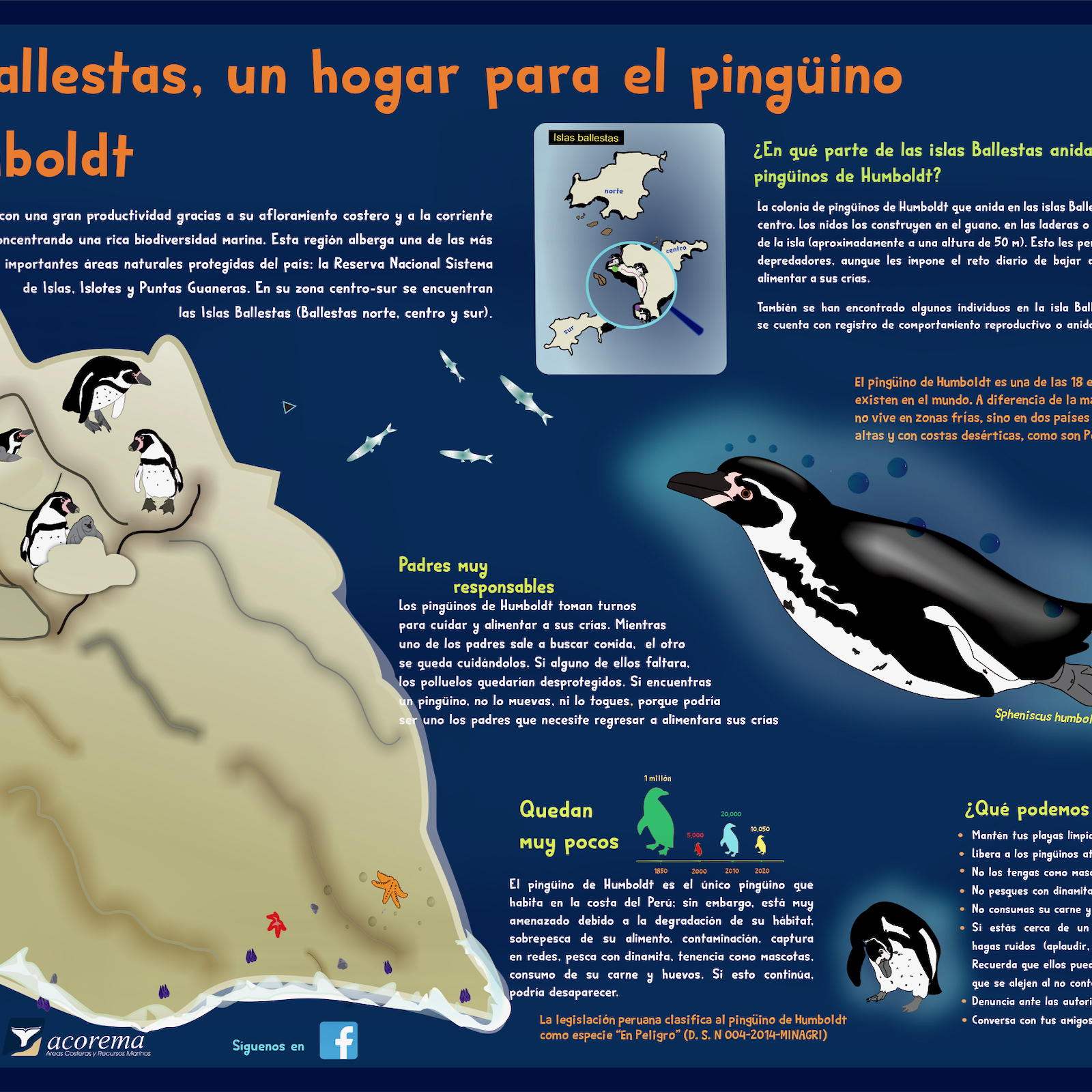Pisco, Landau, 26 July 2023.
For the first time, there is reliable data on the breeding success of the Humboldt penguin colony on the Ballestas Islands in southern Peru. On behalf of Sphenisco, the NGO Acorema collected data in two breeding periods. Originally, the research was to be carried out from July 2021 to June 2022. Due to the Covid 19 pandemic, delays in permits, political and social protests, including road blockades and curfews, the study could not be conducted as planned and was not completed until the end of February 2023.
Now Acorema has presented the final report "Preproduction Aspects of the Humboldt Penguin Colony on the Ballestas Islands, Pisco, Peru" (see PDF spanish version). Señora Milagros, head of the project, explicitly thanks Sphenisco and the sponsors, Zoo Frankfurt and Vogelpark Marlow, in the report. However, she addressed her very special thanks to the deceased founder and long-time chairperson of Sphenisco Gabriele Knauf.
The findings of Señora Milagros' report can be summarized as follows:
The breeding season of Humboldt penguins varies according to the geographic location in their range. There is little representative data on the parameters of their reproduction. Therefore, data on birth rate, juvenile development, juvenile survival, and adult mortality are needed to make projections for the Humboldt penguin population.
The colony on the Ballestas Islands consists of three sub-colonies (see videos and photos):
- Subcolony X with 106 individuals and 46 nests,
- Subcolony Z with 35 individuals and 9 nests and
- Subcolony Y with 45 individuals and 12 nests.
The study determined a breeding success of 1.1 per active nest, meaning 1.1 fledglings grew up per nest. Comparing this result with the breeding success data collected by G. Luna et al. in 2021/22 on the Chilean islands of Chañaral and Choros (Chañaral 1.3 and Choros 1.43 fledglings per nest), it appears that the rate on the Ballestas Islands is similar high at 1.1 fledglings. Reproduction rates at this level are sufficient in themselves to ensure the viability and future of the colony. However, because external factors - anthropogenic activities or natural phenomena such as currently El Niño - may occur, it is necessary to study breeding success in the medium and long term to compare and evaluate possible effects of external factors.
Subcolony X is the largest colony and has the highest reproductive success. This may be related to better location, characteristics of the area and better nesting sites compared to Colony Y and Colony Z. It was found that nests protected by rock walls appeared to provide better protection for the young birds in both breeding periods studied.
It was observed that 30% of the nests abandoned by penguins after the breeding season were used by Guano Boobies (also Peruvian Booby) (Sula variegata). Apparently because of competition for nests, aggressive behavior of Guano Boobies towards chicks and adults of Humboldt Penguins was recorded.
The pronounced tourist activities do not directly affect the penguins during the breeding season, as they nest high in the center of the island. However, during the molting period, when penguins gather at the water's edge waiting to change their plumage, they are in danger of jumping into the water due to stress caused by tourist boats, even though their plumage has not yet been restored.
It was planned to study breeding success on the Ballestas Islands this year and possibly in future years to compare and evaluate possible effects of external factors. Currently, however, it is not possible to monitor breeding success there because all Humboldt penguins have left the islands due to El Niño. Hopefully they followed their prey fish into cold ocean currents or cold water cells. Señora Milagros expects that investigations will not be able to continue until 2024 at the earliest. At present, consideration is being given to scientifically documenting the current situation.
W. K.
translated by Claudia Fawer




